Visit your favourite destinations |
| A Report from birdtours.co.uk |
Norfolk: a summer visit,
Norfolk is a magnet for UK birdwatchers. In most seasons there is a range of birds to be seen that are not easily available in other areas.
In summer these birds are likely to include Montagu's Harriers, Honey Buzzard, Stone Curlew, Woodlark, Golden Oriole, Golden Pheasant, a wide range of returning waders on the coast, Terns and other seabirds off shore and on a more humble note Nightjar and Barn Owls both of which can be readily found in North Norfolk.
This report highlights the key summer sites, how to get to them and what birds to expect:
Cley:
This Norfolk Naturalists Trust reserve remains a mecca for birders. It probably has a "longer list" than any other UK mainland site. In summer the main attractions are the returning waders. Birds like Ruff and Spotted Redshank are relatively common and scarcer waders like Curlew Sandpipers, Little Stints and Wood Sandpipers are to be expected. American Waders turn up with some regularity. Waders start to build up in July but are better in August and September. Bittern and Marsh Harrier both breed. Terns also put in an appearance, Arnolds Marsh in the far NE corner of the reserve is the key site. Black and Roseate Terns sometimes join the flocks of commoner birds.
Cley is expensive to visit for non-members, there is also a £1 additional charge for the beach car park. I suspect that more birders try to avoid paying at Cley than at any other reserve in the country. There is a real case for a one week pass to NNT reserves, I feel sure that holidaying birders would use it. There is a good (and free) information centre where permits can be bought. A recent sightings board can be found at the entrance. For such a prestigious reserve, and from my recent experience, this is not kept very up to date.

Titchwell RSPB Reserve:
Titchwell is a showcase reserve, free to RSPB members and with just a car park fee for non-members. Visitor facilities are excellent, hides are big and clean and the recent sightings board is kept up to date. It attracts a similar range of species to Cley and arguably has had a better run of recent rarities.
In addition to the expected range of warblers, waders and ducks, the star of Titchwell is undoubtedly the resident Black-winged Stilt, present for over five years and still delighting the visitors.
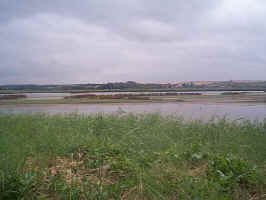
Salthouse and Kelling Heaths:
These beautiful heaths come into their own in the evenings when Nightjars and Nightingales start to sing.
Salthouse Heath is better for Nightingales which are best listened for in May and early June (and probably impossible thereafter)
Kelling Heath is arguably better for Nightjar. I have seen them in full daylight here but more normally they come out just as it becomes to dark to see them! Another option is to get up at dawn when they fly about in better light before retiring for the day.
Other birds of the heaths include Yellowhammers, Tree Pipits and small numbers of Woodlark.
Weeting Heath NNT: (Midway between Weeting Village and Huckwold cum Wilton)
Weeting Heath is THE Stone Curlew site. There are other places in Norfolk that Stone Curlew can be seen, but with the species being so scarce, it really is far more sensible to pay the entrance fee and study them at leisure without any risk of disturbance. There are usually a few Stone Curlew showing, though they are more active at dawn and dusk.
Other birds regularly seen on the reserve include Woodlark, Green Woodpecker, Spotted Flycatcher and Little Owl.
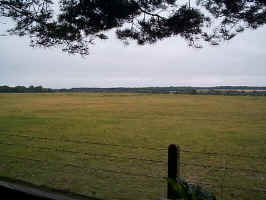
Lakenheath Fen: (c2 miles N of Lakenheath Village, actually in Suffolk)
Golden Orioles breed in very small numbers in East Anglia. One of the few sites in the public domain is a poplar plantation at Lakenheath. Park at the new RSPB car park, near to Lakenheath railway station and walk along the banks of the river. On the north bank of the river is the newly created Lakenheath Fen Nature Reserve, which is already starting to attract some good birds. The aim ultimately is to attract Bittern to the site. Continue walking towards the plantations, the reeds on either side of the path will be alive with Warblers in the Spring. If Golden Orioles are present their song can be heard from a considerable distance away. DO NOT enter the plantations, Golden Orioles are a protected species, with patience they will be seen flitting around the tree tops eventually.
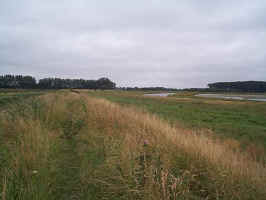
Wayland Wood: (c1 mile south of Watton on the A1057)
This small patch of ancient woodland (also a nature reserve) is probably the best place in the country for seeing Golden Pheasant. ( I saw a male within one minute of arriving on my first visit, compared with 10 years of never seeing them at the Wolferton Triangle, the other key site.(Not that I looked very often!))
Post Script: A report from December 2001 suggests that Golden Pheasant have not been seen recently....back to the Wolferton triangle I guess!
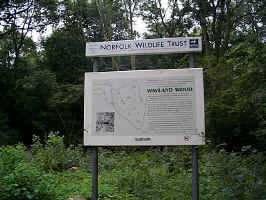
North Wooton / Snettisham:
Montagu's Harriers breed in this area. For many years, birders have viewed the birds distantly from the back roads of North Wooton. This year the breeding birds have been further north and have been best viewed from the southern end of the Snettisham RSPB reserve, overlooking the Saltmarsh.
Swanton Novers:
There is a raptor viewing point overlooking Swanton Novers Great Wood.(TG 006304). Honey Buzzards hunt over this area with some regularity. Unfortunately the wait can be long and tedious. Experience recently, indicates that midday / early afternoon is probably best for successful viewing. Over the years a remarkable range of unexpected raptors have been observed here, the benefit of many eyes scanning the skies at the same time.
Kings Lynn:
Fisher Fleet, in the centre of Kings Lynn docks, would not be on everybodies list of places to visit for an exciting day out. However, the evidence of Summer 2000, with eight species of Gulls present, including Glaucous, several Yellow-legged and a putative Caspian / not sure quite what type of gull, certainly raised its profile. The gulls feed on a rich diet of crushed Shellfish pouring from an outfall pipe at the mouth of the Fisher Fleet. (Very smelly)
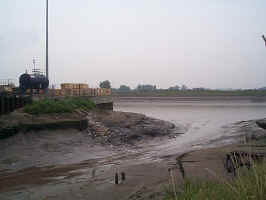
Summary:
These sites could all be covered in a long weekends summer visit and would provide entertaining and rewardind birding. Equally they could form the basis of a flying "year ticking" visit from afar. At migration times and in winter the choice of sites would be rather different....!
Bibliography:
|
Where to Watch Birds in East Anglia
|
The Birds of Norfolk Moss Taylor, Michael Seago, Peter Allard, Don Dorling
Notes on the Birds of Cley, Norfolk Henry Nash Pashley
Why not send us a report, or an update to one of your current reports?